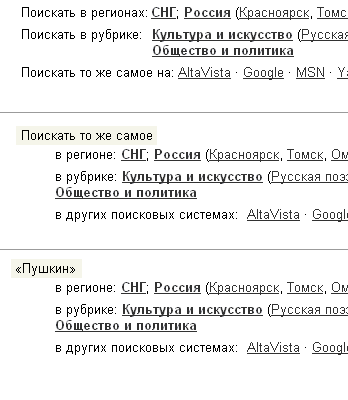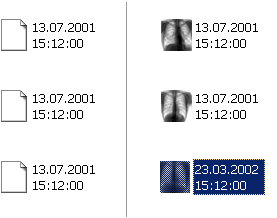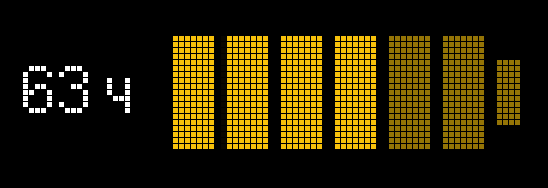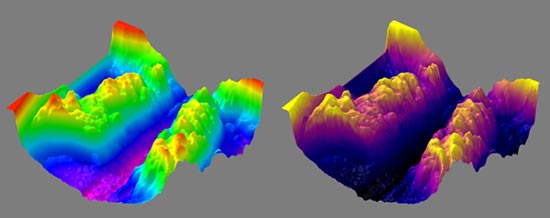Informativeness
|
The information which a program or a device conveys to a person contains a semantic part. The property described as the portion of useful information contained in the overall message can be called informativeness. A good interface conveys the gist of information with minimum means. Very often the volume of information being conveyed can be reduced manifold without damaging the meaning. And vice versa, the informational value can be boosted without increasing the volume of the message. This optimization should be brought about at the level of linguistic formulas, visual tools and the structure of the interface. |
|
An example of optimization of a Yandex search page fragment: the repeated part (the word “search”) is transferred to the general part of the list and then replaced with a more informative text (“Pushkin”)
 |
To improve informativeness in the Pro Scan program, it was suggested that the recurring X-ray picture pictograms be replaced with their smaller copies
 |
 On the display of the Mabbila cell phone the remaining power is indicated in a graphical scale and in hours of operation left
Not only should the information conveyed to a person be comprehensive—it should also be apparent. For example, to visualize three-dimensional surfaces, apart from the imitated light, a color scale (pseudospectrum) is often used to encode the height of every point, which allows for pinpointing the areas with equal heights. Every subsequent color of this scale should look lighter than the previous one. Unfortunately, in most cases a physical spectrum (“rainbow”), or randomly chosen gradients are used for that, which are not effective enough to visualize the gradually changing values. When we developed the interface of ProScan software, we selected a pseudospectrum that provided a perfect demonstration of the varying height of the surface.  The left hand image shows a surface in the physical spectrum, the right hand one—in a specially selected pseudospectrum
|